Fundamentals of Business Economics
In this section we will try to provide some concepts underlying the principles that govern business management. We will talk about launching a company (start-up), purchasing/stock management, clarifying the definition of objectives and the concepts of productivity, marketing levers (marketing mix) and cash flow (cash-flow). A brief overview will touch personnel management and environmental sustainability. It is advisable to deepen the concepts with specific manuals and texts.
HOW TO CREATE A BUSINESS PLAN
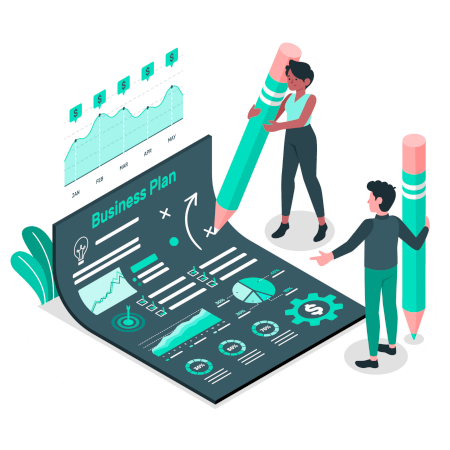
The creation of a business plan is a fundamental step for anyone intending to start a business, because it allows you to evaluate the feasibility of the project and plan future activities. Let's see below the main steps to create an effective business plan:
- Analysis of the market situation: first of all, it is necessary to carry out an analysis of the reference market, to understand the degree of competition and market opportunities. This analysis involves an assessment of market trends, potential market niches, competitors and growth opportunities.
- Goal Setting: Once you have a thorough understanding of the market, you need to define your business goals, both short-term and long-term. These goals must be clear, measurable and achievable.
- Definition of the strategy: on the basis of the objectives defined, it is necessary to define the strategy to be adopted to achieve them. In this context, the actions to be taken, the products or services to be offered, the methods of commercialization and marketing activities will have to be defined.
- Analysis of costs and sources of financing: to start a business, it is necessary to carefully analyze the investment and management costs and identify the available sources of financing. This analysis also includes an evaluation of the methods of recovery of the investment.
- Operational planning: on the basis of the defined strategies and objectives, it is necessary to draw up a detailed operational plan, in which the activities to be carried out, the times and methods of implementation are defined, as well as the necessary resources.
- Risk analysis: to minimize the risks associated with starting a business, it is important to carry out an assessment of possible critical issues and identify strategies to mitigate or overcome them.
Once all these elements have been defined, it will be possible to move on to drafting the actual business plan, which must contain all the aspects analysed, describe the activity and the work team, report the results of the market analysis, define the objectives, strategy and operational actions, analyze costs and sources of financing and identify the risks associated with the activity.
The business plan, in addition to being a support tool for starting a business, can also be used to present the project to investors, banks and other subjects interested in evaluating the feasibility of the business idea.
HOW TO DEFINE A GOAL (SMART)

SMART Goal is an acronym that is used to define a methodology for setting clear and measurable goals. The acronym SMART stands for:
- Specific: The goal must be well defined and specific, not ambiguous or generic.
- Measurable: The goal must be measurable so that progress and results can be quantified.
- Achievable: The goal must be achievable, realistic and doable.
- Relevant: The goal must be relevant and aligned with the individual's or organization's long-term goals.
- Time -bound: The goal must have a defined deadline, so that you can establish an action plan and measure success.
The SMART goal is a useful technique for setting goals that can help guide and motivate people and organizations to succeed.
SOURCES OF FINANCING

There are many sources of funding that a business can use to finance its operations and investments. Some of the major sources of funding include:
- Equity: Equity refers to the funds invested by the company's shareholders. These funds can be used to finance the company's current operations or to finance long-term investments.
- Debt: Debt refers to loans that the company can obtain from banks or other financial institutions. These loans can be short term or long term and can be secured or unsecured.
- Soft Loans : In some cases, a business may be eligible for low-interest loans, such as low-interest loans or government grants, to support its operations.
- Financing through leasing : leasing is a finance lease agreement through which the company can acquire an asset without having to buy it directly. In this case, the company pays a periodic fee to the owner of the asset.
- Financing through factoring: factoring is a financial transaction through which a company transfers its trade receivables to a financial intermediary, who takes care of collecting them.
- Venture Capital Investments : Venture capital investments are a type of financing obtained by companies that invest in emerging companies or start-ups. In this case, the company receives a loan in exchange for an equity stake.
- Funding through crowdfunding: Crowdfunding is a form of financing obtained through the collection of money from a large number of people through online platforms.
- Deferred payments: this occurs when the payment terms for supplier invoices are longer than the average collection time for invoices issued to customers.
THE STAGES OF CREATING A COMPANY (START-UP)
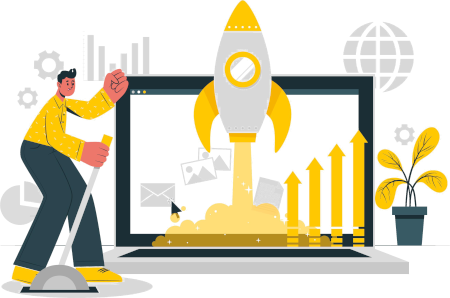
The process of starting a business can be divided into several phases, each of which requires a specific cost and time. Below, we see the main stages, costs and estimated time for starting a business.
- Ideation phase: in this phase, the idea of a company is obtained and an initial assessment of the feasibility of the project is carried out. The time required for this phase varies according to the complexity of the project, but is usually from a few weeks to a few months. The costs of this phase are relatively low and mainly consist of market research, consultancy and patent registration expenses.
- Planning phase: in this phase a detailed business plan is developed which includes market analysis, definition of objectives, elaboration of strategies, definition of processes and business organization. This phase takes from one to three months of work and costs can vary according to the complexity of the plan and the type of consultancy needed.
- Formation phase: in this phase the legal form of the company is defined, the company is registered with the Commercial Register and all the necessary authorizations for starting the activity are obtained. This phase takes two to four months and costs include the costs of registering the company, registering with the Chamber of Commerce, obtaining permits and legal fees.
- Start-up phase of the activity: in this phase the necessary equipment is purchased, the spaces are set up and the production or provision of services is started. This stage takes between two and six months and costs include the cost of purchasing equipment and materials, renting premises, hiring staff and promoting the business.
Overall, the time it takes to start a business can range from six months to a year or more, depending on the complexity of the business and the type of permits required. The costs can vary a lot, according to the needs of the company and the costs of the market. In any case, it is important to keep costs under control and to carefully plan each stage of starting a business to minimize risks and maximize the chances of success.
LEASE OF AN INDUSTRIAL BUILDING

The costs for leasing an industrial building depend on various factors, including the geographical location, the size of the building, the condition of the property and the duration of the lease.
In general, the costs for renting an industrial building include:
- Rental fee: the rental fee represents the sum of money that the lessee must pay to the lessor for the use of the industrial building. The rent can be established on the basis of a price per square meter or a fixed price for the entire building.
- Condominium expenses: condominium expenses include the costs of maintenance, cleaning and management of the property and common areas, such as parking lots, green areas and common areas. These expenses are divided among all condominiums and depend on the size and condition of the property.
- Taxes and Duties: In some cases, industrial property leases may be subject to local taxes and duties.
- Renovation costs: if the industrial building requires renovation or adaptation to current regulations, the lessee may have to bear the costs for these activities.
- Utility costs: The lessee has to pay utility bills, such as electricity, gas and water, which are used for the industrial activity.
Furthermore, the total cost of leasing an industrial building can also be influenced by the duration of the lease. Typically, long-term leases provide for lower rents than short-term leases.
PURCHASES AND SUPPLIERS

Purchasing inventories of manufacturing materials is critical to running a business, as the efficient procurement of raw materials, components and supplies is critical to ensuring the continuity of operations and the quality of the final product. Here are some of the factors to consider when purchasing manufacturing material inventories and choosing suppliers:
- Quality: the quality of the materials is a critical factor for the quality of the final product. Suppliers must be able to guarantee the quality of the materials, through quality certifications, tests and controls.
- Price: The price of materials is an important factor to consider, as it has a direct impact on the profitability of the company. However, price should not be the only factor considered in choosing suppliers, but should be evaluated as regards to the quality of materials and delivery times.
- Delivery times: The delivery times of materials are important to ensure the continuity of production operations. Suppliers must be able to meet established delivery times and provide a reliable and punctual service.
- Reliability: Supplier reliability is an important factor to consider, as a reliable supplier can ensure continuity of material supply and reduce the risk of production disruptions.
- Production capacity: the supplier's production capacity is important to ensure the availability of materials in case of increases in demand or seasonal peaks.
- Innovation: Suppliers can offer innovative materials or advanced technologies that can improve the quality or reduce the cost of products. The ability of suppliers to innovate can be a differentiator for the company.
- Technical Support: Suppliers may offer technical support to help the company make the best use of materials or resolve any technical issues.
- Sustainability: Sustainability of materials and supplier practices has become increasingly important to companies seeking to reduce environmental impact and meet sustainability-minded customer needs.
- Supplier relationships: Supplier relationships can be important to ensure long-term cooperation and to obtain favorable supply terms. Building relationships of trust and partnerships can lead to competitive advantages for the company.
In general, the choice of suppliers should be based on a balanced assessment of the factors listed above, in order to select the most suitable suppliers for the company's needs.
STOCK MANAGEMENT

Warehouse and inventory management refers to the set of activities and processes that a company adopts to efficiently manage the items and goods in its warehouse.
In particular, warehouse management includes the physical organization of the warehouse, i.e. the arrangement of the products, the definition of the storage areas, the labeling of the products and the management of the spaces. Furthermore, warehouse management also includes the organization of goods handling processes, i.e. the activities of receiving, storing, preparing orders, packing and shipping goods.
Inventory management, on the other hand, refers to planning and controlling the level of availability of goods in the warehouse, to avoid both product shortages and excess stocks. Inventory management involves analyzing customer demand, defining a safety stock level, identifying products to be replenished and planning purchase orders.
Proper warehouse and inventory management is important for the efficiency and competitiveness of the company, as it allows you to avoid loss of sales due to product shortages, reduce storage costs and minimize the risk of obsolescence of stocks. Furthermore, good warehouse management can improve customer satisfaction by reducing delivery times and increasing the availability of the required products.
Inventory management techniques are methods used by companies to manage inventory levels and the supply of raw materials, components and finished products. The two most common inventory management techniques are:
- LIFO (Last In, First Out): This method assumes that the last inventory acquired is the first to be sold or used. In other words, the LIFO method considers that the most recent goods are those left in stock and therefore must be sold first. This method is often used in times of inflation, as more recently purchased goods cost more.
- FIFO (First In, First Out): This method assumes that the first inventories acquired are the first to be sold or used. In other words, the FIFO method considers that the oldest goods are those left in stock and therefore must be sold first. This method is often used in times of deflation, as more recently purchased goods cost less.
In addition to LIFO and FIFO, there are other inventory management techniques, including:
- Weighted average cost method: this method provides that the cost of inventories is calculated on the basis of the weighted average of the purchase cost of the various quantities of material or finished product. In this way, the cost of inventory reflects the average cost of the materials acquired.
- Periodic reordering method: this method requires stocks to be reordered in a given time interval, based on the pre-established minimum stock level. In this way, the company can reduce the risk of out-of-stocks and optimize procurement.
- Fixed Point Reorder Method: This method involves stock being reordered when the stock level reaches a certain pre-set reorder point. In this way, the company can reduce the risk of out-of-stocks and ensure constant availability of raw materials or finished products.
In general, the choice of inventory management technique depends on the specific needs of the company and the type of product or service offered. It is important to consider inventory costs, supplier lead times, and market demand to determine the most effective inventory management technique.
PRODUCTIVITY

Business productivity refers to the ability of a company to produce goods or services by making the best use of the resources at its disposal, i.e. obtaining maximum results with minimum effort. Productivity is an indicator of business efficiency and can be measured in various ways, for example in terms of production quantity per unit of time, turnover per employee or profit per unit of invested capital.
Good company productivity is important for the success of the company, as it allows to increase production, reduce costs, improve product quality and increase market competitiveness. A company that is able to improve its productivity can achieve greater efficiency and make its business more profitable.
To increase productivity, companies can adopt various strategies, such as automating processes, optimizing the supply chain, implementing advanced technologies, investing in employee training and adopting incentive policies and staff motivation.
MARKETING MIX
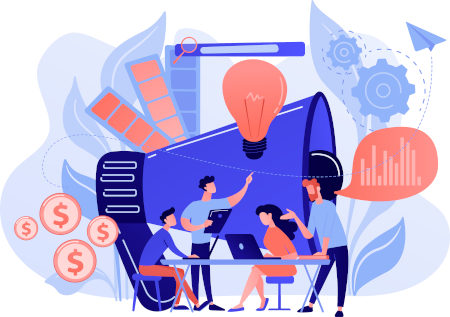
Marketing levers, or marketing mix, are a set of variables that companies can use to influence consumer behavior and achieve their marketing objectives. The 4 traditional levers of marketing are:
- Product: Refers to the features and functionality of the product or service offered by the company. Product strategy focuses on how to create, position, and manage the product to meet customers' needs and expectations.
- Price: This refers to the monetary value of the product or service and the pricing strategy used by the business. Pricing strategy can influence the consumer's perception of the value of the product or service, and it can also influence their purchasing decision.
- Promotion: Refers to all marketing activities used to promote the product or service, such as advertising, promotions, public relations, direct marketing and personal sales. The promotion strategy is important to reach the target audience and create awareness of the product or service offered by the company.
- Distribution: refers to the distribution channels used by the company to get the product or service to the end customer. The distribution strategy includes the selection of sales channels and the management of the distribution chain, in order to ensure that the product or service is available and accessible to the target audience.
In recent years, other marketing levers have been added to reflect the evolution of the market and technologies, such as:
- Personas: refers to the identification of different customer profiles and the personalization of marketing activities according to their needs and behaviors.
- Social Proof: This refers to using positive customer testimonials and reviews to build trust and credibility of your product or service.
- Processes: refers to the management of the company's internal processes to ensure an efficient and pleasant shopping experience for the customer.
- Presence: This refers to the company's presence on digital channels, such as social media and website, and the creation of useful and interesting content for customers.
- Partnership: Refers to collaborating with other companies or organizations to achieve common marketing and business goals.
PROMOTIONAL CHANNELS
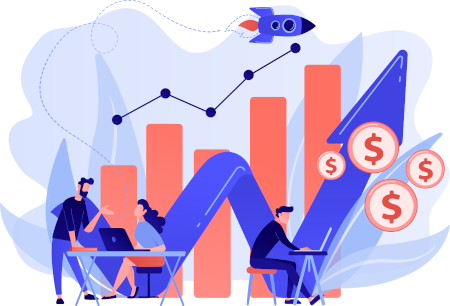
There are several promotional channels that businesses can use to promote their products or services. Some of the more common and popular promotional channels include:
- Advertising: Advertising is a form of marketing communication that uses mass media, such as television, print, radio and online banners to promote a product or service.
- Sales Promotions: Sales promotions include discounts, special offers, coupons, and loyalty programs, with the goal of driving sales and incentivizing customers to try or purchase a product or service.
- Direct Marketing: Direct marketing involves the use of personalized communications to interact with the target audience. It can be accomplished through email marketing, telemarketing, direct mail and text messaging campaigns.
- Public Relations: Public relations is a form of strategic communication that aims to promote the reputation of the company or product through the management of relations with the media, influencers, stakeholders and the public.
- Events and experiences: events and experiences include trade shows, exhibitions, workshops, product launch events and brand immersion experiences with the aim of promoting the company and its products or services.
- Social Media Marketing: Social media marketing involves using social media, such as Facebook, Instagram, Twitter, and LinkedIn, to reach your target audience and promote your company's products or services.
- Outdoor Advertising: Outdoor advertising uses advertising mediums, such as billboards, trams, buses, and taxis to reach the target audience and promote the product or service.
- Sponsorships: Sponsorships include the association of the business or product with an event, organization, or cause, with the goal of promoting the product or service and enhancing the reputation of the business.
The choice of promotional channels depends on the specific needs of the company and the product or service offered, the reference target and the available budget. Typically, marketing strategies involve using a combination of multiple promotional channels to maximize campaign visibility and effectiveness.
THE IMPACT OF ENVIRONMENTAL SUSTAINABILITY ON COMPANY MANAGEMENT

The impact of environmental sustainability on business management has become increasingly important in recent years. Environmental sustainability refers to the ability to meet the needs of the present without compromising the ability of future generations to meet their own. Sustainable business management focuses on creating long-term value for the company, its stakeholders and the environment in which it operates.
There are several ways in which environmental sustainability can influence business management:
- Cost reduction: Companies can reduce production costs by implementing sustainable practices, such as the use of renewable energy, reducing water consumption and reducing waste. Additionally, implementing sustainability strategies can help avoid fines and penalties related to violations of environmental regulations.
- Improvement of the company image: the implementation of sustainable practices can improve the company's image and reputation, making the company perceived as responsible and committed to environmental protection.
- Increased operational efficiency: The adoption of sustainability strategies can improve the operational efficiency of the company, for example through the use of efficient technologies and the reduction of resource consumption.
- Improving customer relations: Customers are increasingly aware of the environmental impact of the products and services they buy. Companies that adopt sustainable practices can therefore improve the relationship with their customers by offering environmentally friendly products and services.
- Access to finance and investment: More and more investors and lenders are interested in supporting companies that adopt sustainable practices. Companies that adopt sustainability strategies can therefore access sources of finance and investment that would otherwise not be available.
In summary, environmental sustainability has a significant impact on corporate management, not only in terms of environmental sustainability, but also in terms of operational efficiency, customer relationships and access to finance and investments. Companies that adopt sustainable practices can improve their overall performance and create long-term value for all stakeholders.
COMPANY REPUTATION

Corporate reputation has a significant impact on the success and sustainability of a business. A good reputation can lead to increased customer, investor and employee trust, while a bad reputation can lead to decreased sales, lost investors and difficulty recruiting talent.
Here are some specific examples of how corporate reputation can affect a business:
- Customer Confidence: Customers will rather do business with a company with a good reputation than a company with a bad reputation. The company's reputation can influence customers' purchasing decisions, as well as their willingness to recommend the company to others.
- Investments: Investors consider the company's reputation before investing in it. A company with a good reputation can attract more investment, while a bad reputation can discourage investors.
- Recruitment: Job applicants are influenced by the reputation of the company. Firms with a good reputation will be more likely to attract highly qualified candidates, while those with a bad reputation may struggle to recruit the best talent.
- Media Relations: The company's reputation can influence media coverage. Businesses with a good reputation may attract positive coverage, while those with a bad reputation may attract negative coverage.
In summary, corporate reputation has a strong impact on a company's image and success. Companies should therefore do their best to build and maintain a good reputation, through the adoption of good business practices and effective management of customer, investor, employee and media relations.
COMMUNITY INVOLVEMENT
Community involvement can be very important to your business in several ways:
- Reputation Improvement: The company's involvement in the community can enhance its reputation, as it demonstrates the company's commitment to the greater good.
- Increased Visibility: The business can gain increased exposure through community involvement, such as attending local events, sponsoring activities, and organizing events.
- Improved customer relationships: Community involvement can help the company develop positive customer relationships by demonstrating its concern for the well-being of the community.
- Increased employee engagement: Employees can feel more engaged and motivated if the company supports the community in which they work.
- Improved relations with local authorities: The company can improve its relations with local authorities through community involvement, as it demonstrates a commitment to community welfare and can lead to increased cooperation between the company and local authorities
- Business Opportunities: Involvement in the community can lead to business opportunities, as the company can connect with other community members who could become customers or business partners.
In summary, involvement in the community can lead to a number of benefits for the company, including improved reputation, greater visibility, better relations with customers and local authorities, increased employee engagement and business opportunities.
FACTORS THAT MAY AFFECT STAFF SATISFACTION

Staff satisfaction depends on many factors. Listed below are some of the most important aspects that can affect staff satisfaction:
- Compensation: Compensation is a key factor in staff satisfaction. Compensation that is adequate and in line with the individual's skills and responsibilities can increase employee motivation and satisfaction.
- Work environment: A comfortable and safe work environment, with good lighting, ventilation and adequate space, can contribute to employee satisfaction.
- Growth Opportunities: The opportunity to grow within the company, through professional training, acquiring new skills or promotion, can increase staff motivation and satisfaction.
- Communication: Effective and transparent communication within the company can improve employee satisfaction. Communication should be open and candid, with opportunities for employees to express their opinions and concerns.
- Corporate Culture: A positive corporate culture, which promotes values such as work ethic, respect, collaboration and recognition of merit, can contribute to employee satisfaction.
- Work-life balance: Work-life balance is important to employee satisfaction. A company that promotes flexible work policies and respects the private life of its employees can contribute to their satisfaction.
- Recognition: Recognition of work done and goals achieved can increase employee satisfaction. An effective recognition system, which rewards employees based on their performance and contributions, can contribute to their motivation and satisfaction.
In generale, è importante ricordare che la soddisfazione dei dipendenti dipende da molteplici fattori, che possono variare in base alle specifiche caratteristiche dell'azienda e dei dipendenti stessi. La creazione di un ambiente di lavoro positivo, incentrato sulla valorizzazione delle risorse umane, può contribuire in modo significativo alla soddisfazione e al benessere dei dipendenti.
CASH FLOW

Cash flow (or cash flow in English) represents the inflow and outflow of money actually received or spent by a company over a given period of time. In other words, cash flow represents the amount of money flowing in and out of the company.
It differs from income or profit (which represents expected cash inflows and outflows) in that it only takes account of cash movements that actually occur over a period of time, such as payments made to suppliers, received from customers, investments in assets, purchases of capital assets, interest charges and taxes.
Cash flow is an important indicator of a company's financial health, as it helps you understand if the company is able to generate enough cash to cover operating expenses, asset investments, and interest and tax payments . In addition, cash flow is used by financial analysts to evaluate the efficiency of the company's financial management and its ability to create shareholder value.
FACTORING
Factoring is a financial service that allows companies to obtain immediate liquidity by transferring their trade receivables to a factoring company. Essentially, the company sells its trade receivables to a factoring firm, which in turn advances a portion of the receivables' value to the company, charging a service fee.
Factoring can be divided into two main categories: factoring with guarantee (or factoring with recourse) and factoring without a guarantee (or factoring without recourse).
In factoring with guarantee, the factoring company bears the risk of insolvency of the debtors, but charges a higher fee. In the event of non-payment of the debtors, the factoring company has the right to take action against the client company to recover the advanced money.
In factoring without a guarantee, on the other hand, the factoring company does not bear the risk of insolvency of the debtors, but charges a lower commission. In this case, the client company continues to be responsible for the recovery of the assigned trade receivables.
Factoring can be useful for companies that need immediate liquidity to finance their working capital or to support business growth. Furthermore, factoring can help companies manage the risk of insolvency of their debtors, since the factoring company assumes the risk of non-payment of the assigned debts.
In summary, factoring is a financial service that allows companies to obtain immediate liquidity through the transfer of their trade receivables to a factoring company, which in turn advances a part of the value of the receivables to the company, charging a commission for the service .
BALANCE SHEET AND INCOME STATEMENT
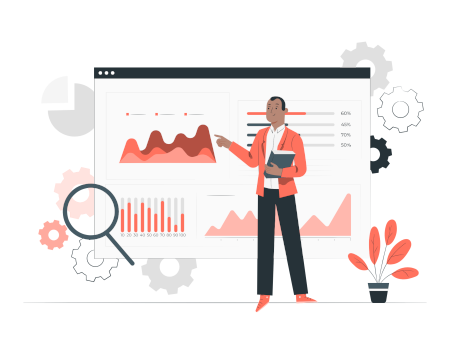
The balance sheet of a company is made up of three main parts: the balance sheet, the income statement and the explanatory notes.
The balance sheet represents the financial position of the company at a given moment, and shows the assets and liabilities of the company, i.e. everything that the company owns and owes. Assets are the economic resources that the company owns, such as real estate, machinery, financial investments, cash on hand and in the bank, while liabilities are the company's obligations, such as trade payables, bank loans, financing, tax debts.
The income statement, on the other hand, indicates the economic result of the company's activity in a given period, usually a year. It presents the company's income and expenses, ie revenues and expenses, highlighting the profit or loss of the company.
Finally, the explanatory note is a document that provides additional and detailed information on the balance sheet and income statement, in order to explain the data presented and to offer greater transparency on the company's activities. The explanatory notes may contain information on the accounting policies adopted by the company, on the extraordinary activities carried out, on financing operations, on tax and legal issues and on other aspects relevant to understanding the situation of the company.
THE CAUSES OF FAILURE

The causes of business failure can be many and often complex. Following are some of the main causes of failure:
- Financial problems: Financial problems can arise from poor management of company finances, bad investments, excessive debt or reduced revenue.
- Failure to innovate: Failure to innovate and adapt to changing market needs can lead to the failure of a company.
- Lacks a long-term business plan: Lacking a long-term business strategy can prevent the business from achieving its goals and being successful.
- Competition: Competition in a saturated market can make it difficult for a business to compete and retain its customers.
- Management Problems: Management problems, such as poor communication, poor staff management, or a lack of effective leadership, can lead to business failure.
- Legal Issues: Legal issues such as civil or criminal liability lawsuits, penalties or fines can cause serious financial problems for a business.
- Production problems: Production problems can cause delays in delivering products and satisfying customer requests.
- Market Changes: Market changes, such as the emergence of new technologies or changing consumer tastes, can negatively affect the company and lead to bankruptcy.
These are just some of the main causes of business failure. Typically, business failure is often the result of a combination of factors, rather than a single, isolated cause.